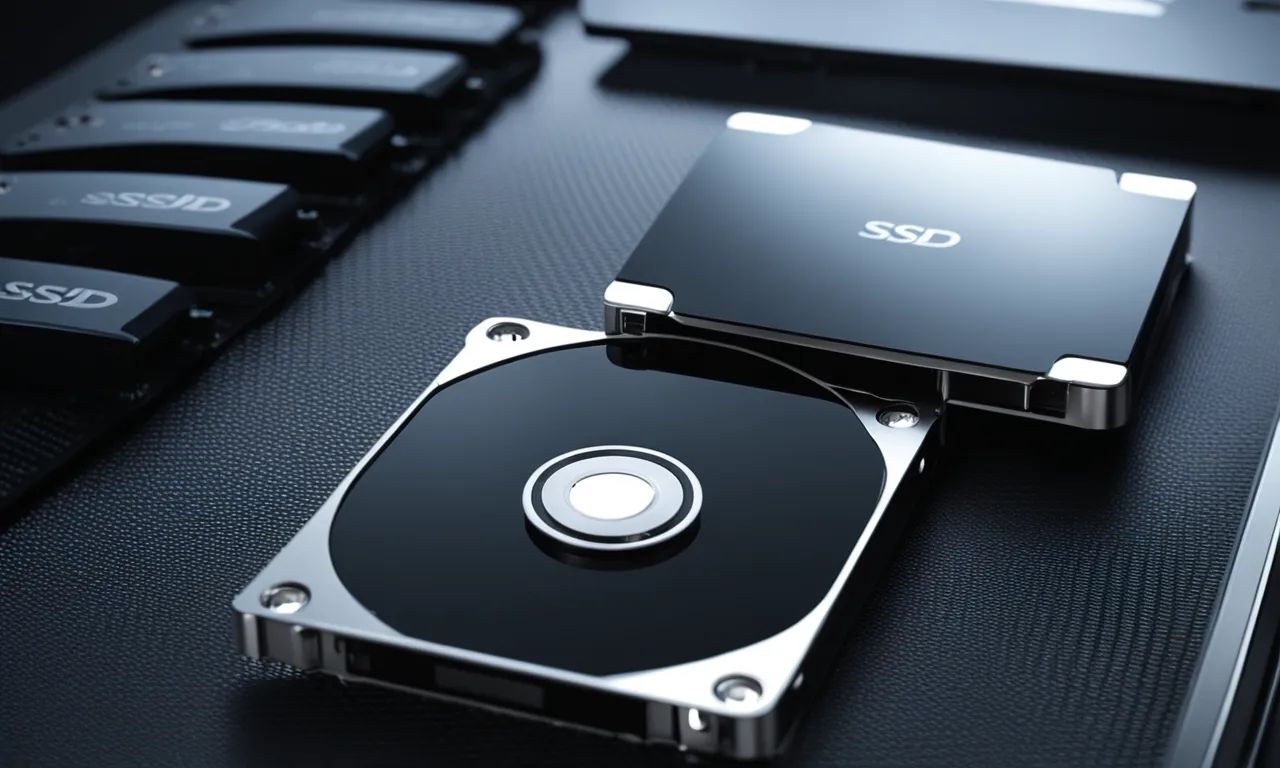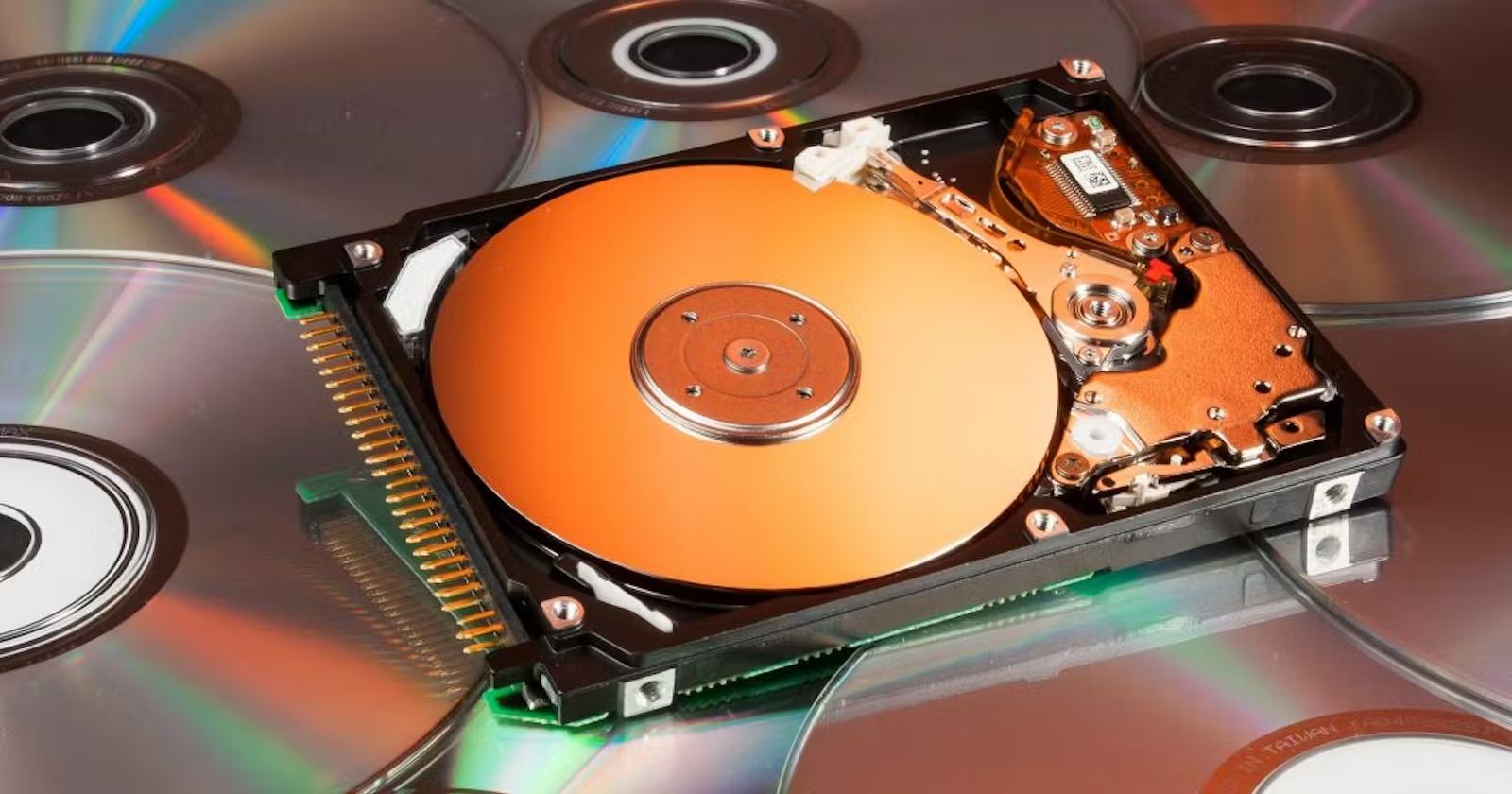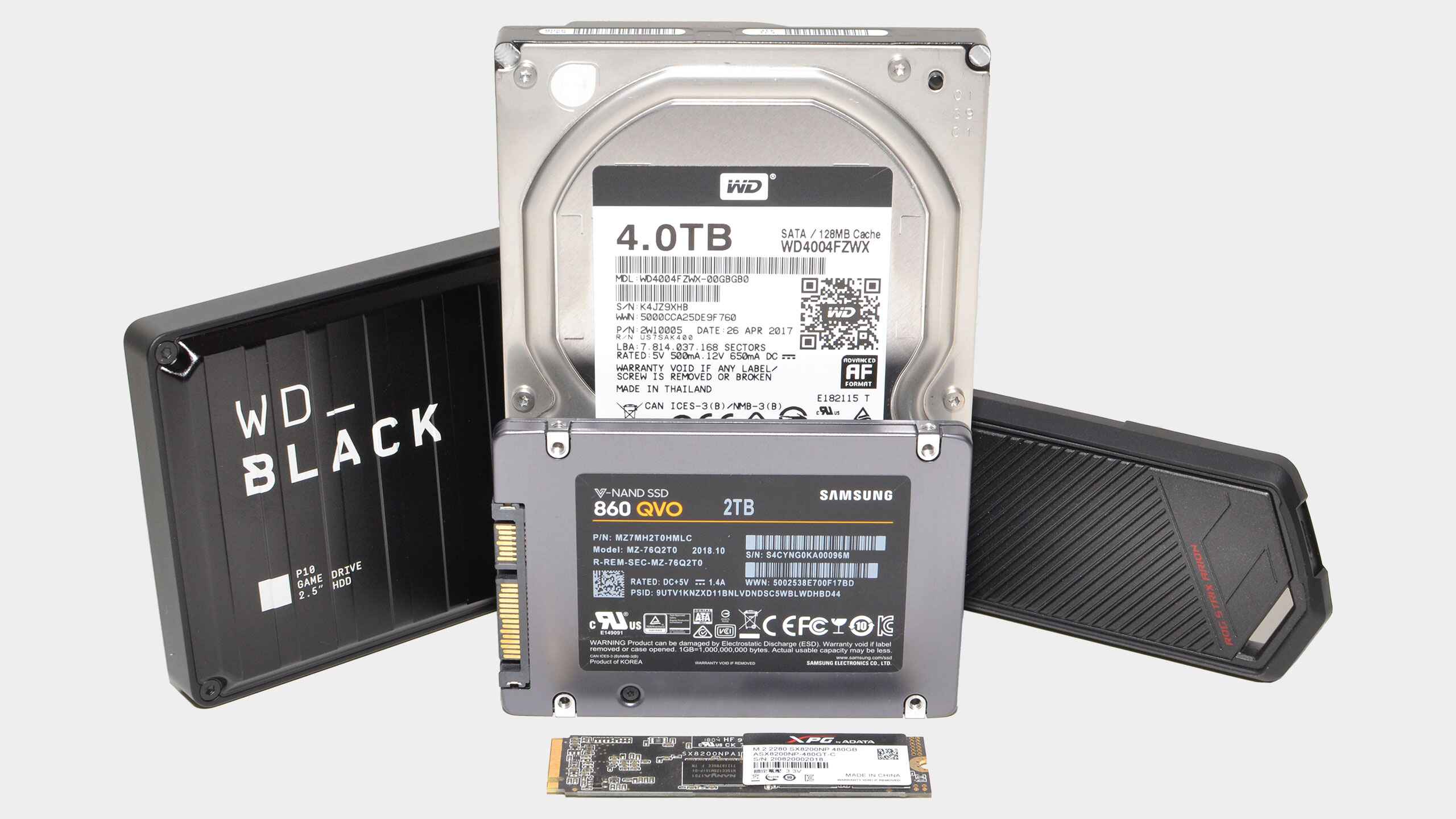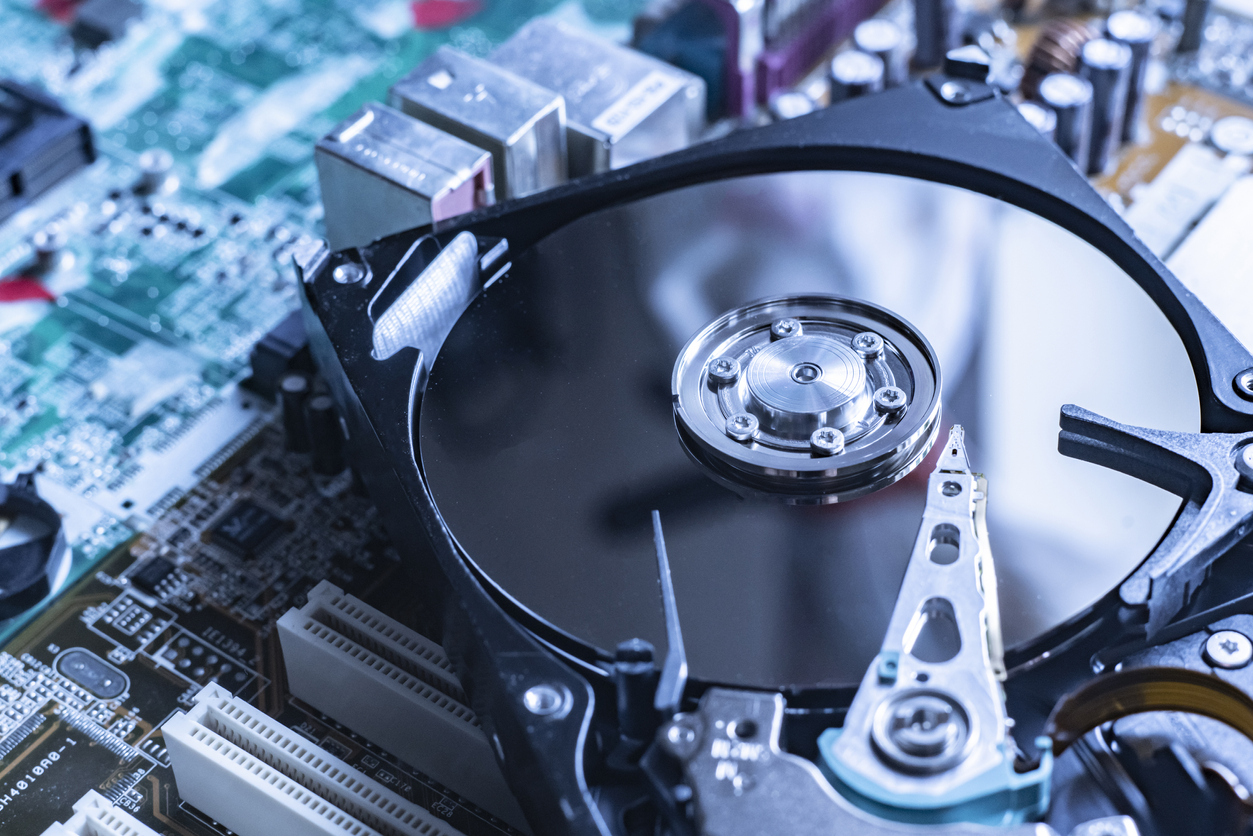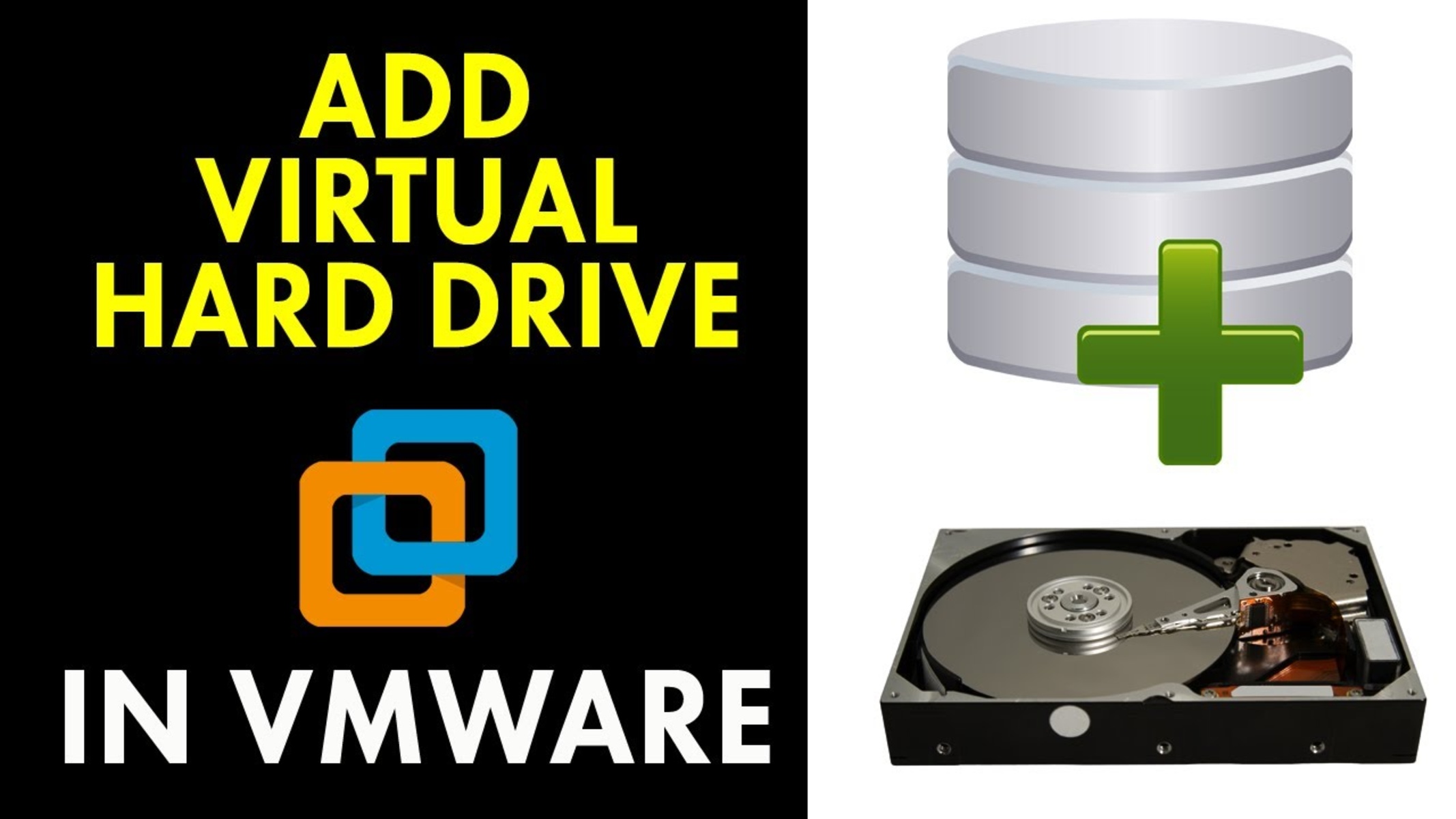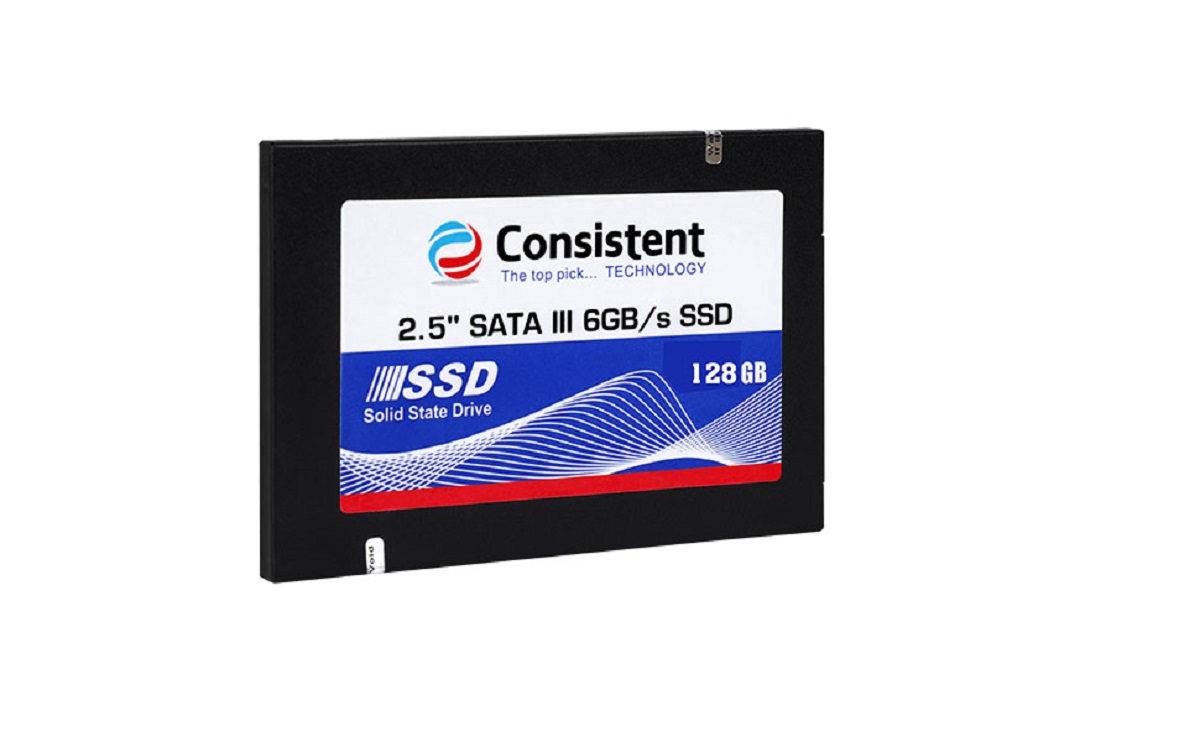Introduction
When it comes to computers and data storage, the hard disk drive (HDD) plays a crucial role. While many computer users are familiar with the concept of the hard drive, there is a lesser-known component called the System Reserve. This often overlooked aspect of the hard drive is essential for the proper functioning and stability of the operating system.
The System Reserve, also known as the System Reserved Partition, is a dedicated space on the hard disk drive that contains critical system files required for booting up the computer. It serves as a reserve area to store essential data and system files that are necessary for the smooth operation of the operating system.
While the main purpose of the System Reserve is to house crucial system files, it also plays a role in protecting your computer from potential problems. By separating these essential files from other data on the hard drive, the risk of accidental deletion or corruption is minimized. This ensures that your operating system remains stable and functional, even if other parts of the hard drive encounter issues.
Located at the beginning of the hard disk drive, the System Reserve is typically a small partition that is hidden from regular file exploration. The size of this partition varies depending on the specific operating system version and requirements. On newer Windows systems, it is usually around 100 to 500 MB in size. Although relatively small, this dedicated space is essential for the proper functioning of the operating system.
The contents of the System Reserve include critical system files such as the Master Boot Record (MBR), Boot Configuration Data (BCD), and other necessary boot files. These files are required for the initial startup of your computer and facilitate the loading of the operating system. The presence of these files in the System Reserve ensures a smooth and efficient booting process.
While the System Reserve is a critical component of the hard drive, it is not readily accessible or visible to most users. It is intentionally hidden to prevent accidental modification or deletion of crucial system files. However, there are scenarios where accessing the System Reserve becomes necessary, such as troubleshooting boot-related issues or modifying advanced system configurations.
What Is System Reserve
The System Reserve, also known as the System Reserved Partition, is a dedicated and hidden area on the hard disk drive that contains critical system files required for booting up the computer. It serves as a reserve space where essential data and system files are stored to ensure the smooth operation of the operating system.
The System Reserve is an integral part of the hard drive that plays a crucial role in the overall functionality and stability of your computer. It acts as a safeguard, separating essential system files from regular data on the hard drive. This separation minimizes the risk of accidental deletion or corruption of critical system files, ensuring that your operating system remains intact and functional.
Typically located at the beginning of the hard disk drive, the System Reserve partition is usually a small portion of the overall disk space. Its size can vary depending on the version and configuration of the operating system installed. For modern Windows systems, the System Reserve partition is typically around 100 to 500 MB in size. It may seem small, but it is essential for the proper functioning of the operating system.
The System Reserve partition contains various critical system files that are necessary for the booting process and the overall stability of the operating system. One of the key components stored in the System Reserve is the Master Boot Record (MBR). The MBR holds essential information about the disk partitions and the boot loader, which is responsible for loading the operating system during startup.
Another critical file contained in the System Reserve is the Boot Configuration Data (BCD). The BCD file holds crucial settings and configuration information required to boot the operating system correctly. This includes details such as which operating system to load, where the operating system is located on the hard drive, and any specific boot parameters.
In addition to the MBR and BCD files, the System Reserve partition also stores other necessary boot files, such as system files required for troubleshooting and recovery purposes.
It is important to note that the System Reserve partition is typically hidden and not visible to regular file exploration. This is done intentionally to prevent accidental modification or deletion of critical system files. While most users do not need to interact with the System Reserve directly, there are specific scenarios where accessing it becomes necessary, such as troubleshooting boot-related issues or modifying advanced system configurations.
In the next section, we will explore why the System Reserve is important and the role it plays in ensuring the proper functioning of your computer’s operating system.
Why is it Important
The System Reserve partition may go unnoticed by most computer users, but it plays a crucial role in the overall functionality and stability of the operating system. Understanding its importance can help you appreciate the significance of this hidden component on your hard disk drive.
One of the main reasons why the System Reserve is important is that it houses critical system files required for booting up your computer. The Master Boot Record (MBR), Boot Configuration Data (BCD), and other essential boot files are stored in this partition. These files are responsible for initiating the boot process and loading the operating system.
Without the System Reserve partition and the necessary system files it contains, your computer would not be able to boot up properly. It ensures that your operating system starts up smoothly, allowing you to access all the functionalities and applications installed on your computer.
Not only does the System Reserve assist in the smooth booting process, but it also protects your system. By separating essential system files from regular data, it reduces the risk of accidental deletion, corruption, or modification. This separation ensures that your operating system remains stable, even if other parts of the hard drive encounter issues.
The System Reserve also serves as a safeguard against various problems that can arise during booting. For example, if the boot loader encounters issues, such as a corrupted BCD file, the System Reserve provides a backup copy to restore the correct settings for a successful boot.
Moreover, the System Reserve facilitates system recovery and troubleshooting. In the event of a system failure or error, your computer can utilize the tools and files stored in the System Reserve to diagnose and resolve the problem. This includes features like Startup Repair and System Restore, which are essential for restoring your system to a functional state.
Furthermore, the System Reserve allows for the implementation of advanced system configurations. It provides a secure space where system-related modifications, such as dual-boot setups or BitLocker encryption, can be stored and accessed without interfering with regular data on the hard drive.
Overall, the System Reserve partition is important because it ensures the proper functioning and stability of your computer’s operating system. It houses critical system files, protects against accidental data loss or corruption, assists in troubleshooting and recovery, and enables advanced system configurations.
Now that we understand the importance of the System Reserve, let’s explore the physical location of this crucial component on the hard disk drive in the next section.
Location of System Reserve
The System Reserve partition is strategically located on the hard disk drive to ensure its effectiveness in booting up the computer and protecting critical system files. Understanding the physical location of the System Reserve can provide insights into how it functions within the broader structure of your hard drive.
By default, the System Reserve is positioned at the beginning of the hard disk drive. It is often the first partition on the drive, appearing before any other partitions that may be present. This positioning ensures that it is accessed early during the boot process, allowing for the proper loading of the operating system.
The reason for placing the System Reserve at the beginning of the hard drive is twofold. Firstly, it optimizes the access time during the boot process. Since the System Reserve contains essential system files that are required for the initial booting phase, having them located at the beginning of the drive minimizes the time it takes for the system to retrieve and load these files.
Secondly, placing the System Reserve at the beginning of the hard drive helps protect the critical system files from accidental deletion or corruption. By separating the System Reserve partition from other partitions containing user data, there is a reduced risk of these important files being overwritten or compromised.
In terms of visibility and accessibility, the System Reserve partition is typically hidden from regular file exploration. This means that it does not appear as a drive letter in the file explorer, and its contents cannot be accessed directly from within the operating system. This hidden attribute is intentional to prevent accidental modification or deletion of the critical system files.
When viewing the partitions on your hard drive through disk management tools, you can identify the System Reserve partition by its specific label, such as “System Reserved” or “EFI System Partition” (on newer systems). These labels make it easier to distinguish the System Reserve partition from other partitions on the hard drive.
It is important to note that the specific size of the System Reserve partition can vary depending on the version of the operating system and the specific requirements of the system. While it is typically a few hundred megabytes in size, newer Windows systems may allocate slightly larger sizes to accommodate additional system files and features.
Understanding the physical location of the System Reserve partition on your hard drive provides valuable insights into how it functions within the overall structure of your computer’s storage system. In the next section, we will delve deeper into the contents of the System Reserve partition and explore the critical system files it contains.
What’s Stored in System Reserve
The System Reserve partition holds a variety of critical system files that are necessary for the proper functioning of your computer’s operating system. These files are essential for booting up the computer and ensuring its stability. Let’s explore some of the key files stored in the System Reserve partition.
One of the primary files stored in the System Reserve is the Master Boot Record (MBR). The MBR is the first sector of the hard disk drive and contains important information about the partition structure and the location of the operating system. During the boot process, the computer accesses the MBR to find the boot loader and initiate the loading of the operating system.
Another crucial file stored in the System Reserve is the Boot Configuration Data (BCD). The BCD file is responsible for storing the configuration settings that are required to successfully boot the operating system. It contains information about various parameters, including the boot menu options, boot order, and system startup settings. The BCD file helps in determining which operating system to load (in case of multiple operating systems installed) and specifies the location of the operating system files.
In addition to the MBR and BCD files, the System Reserve partition also contains other essential boot files. These files include the winload.exe and winresume.exe files, which are responsible for loading the Windows operating system kernel and resuming from hibernation, respectively. Other essential files, such as the winload.efi and winresume.efi files, are used in newer UEFI-based systems.
The System Reserve partition may also store files related to system recovery and troubleshooting. These files include the Windows Recovery Environment (WinRE) tools, which are essential for diagnostic and repair purposes. The WinRE tools can be accessed in the event of system errors or failures, allowing you to recover your computer’s system and restore it to a functional state.
It is important to note that the specific files stored in the System Reserve may vary depending on the version of the operating system and the configuration of your system. Additionally, different operating systems may have different names for the partition and the files it contains. For example, on newer Windows systems, the System Reserve partition is often labeled as the “EFI System Partition,” and it contains EFI-related files.
Understanding the critical system files stored in the System Reserve partition highlights its significance in ensuring the proper booting and stability of your computer’s operating system. In the next section, we will explore how to access the System Reserve and navigate its contents, especially in scenarios where troubleshooting or modifications are required.
How to Access System Reserve
Accessing the System Reserve partition can be a bit more challenging compared to accessing regular partitions on your hard disk drive. However, in certain situations, it may be necessary to access the System Reserve to troubleshoot boot-related issues or perform advanced system configurations. Let’s explore some methods on how to access the System Reserve partition.
1. Windows Disk Management: One way to access the System Reserve partition is through the Windows Disk Management tool. To open Disk Management, right-click on the “Start” button, select “Disk Management” from the menu, and the Disk Management window will open. In Disk Management, you will see a list of all the partitions on your hard drive, including the System Reserve partition. You can identify it by its label, such as “System Reserved” or “EFI System Partition.” Right-clicking on the partition will provide options to explore its properties or assign a drive letter.
2. Command Prompt: Another method to access the System Reserve partition is by using the Command Prompt. Open the Command Prompt as an administrator by right-clicking on the “Start” button and selecting “Command Prompt (Admin)” or “Windows PowerShell (Admin).” Once the Command Prompt window opens, you can use diskpart commands to access the System Reserve partition. Type “diskpart” and press Enter, then type “list disk” to display all the disks on your system. Identify the disk that contains the System Reserve partition, and type “select disk X” (replace X with the appropriate disk number). Finally, type “list partition” to view the list of partitions on the selected disk, including the System Reserve partition.
3. Third-Party Partition Manager: There are several third-party partition management tools available that offer more advanced features compared to Windows Disk Management. These tools allow you to view and manage partitions, including the System Reserve partition, with more flexibility and control. Some popular third-party partition management tools include EaseUS Partition Master, MiniTool Partition Wizard, and AOMEI Partition Assistant.
It is important to note that while accessing the System Reserve partition can be useful in certain scenarios, it is recommended to exercise caution when making changes or modifications to it. Modifying or deleting critical system files within the System Reserve can lead to boot failures and system instability.
In general, most users do not need to interact directly with the System Reserve partition. It is intentionally hidden and protected to ensure the stability and security of the operating system. However, for advanced users or in specific troubleshooting situations, accessing the System Reserve partition can provide valuable insights and options for resolving boot-related issues or configuring advanced system settings.
In the next section, we will discuss some common troubleshooting techniques related to the System Reserve partition to help you address any potential issues that may arise.
Troubleshooting System Reserve Issues
While the System Reserve partition is designed to ensure the smooth functioning and stability of the operating system, issues can still occur. In this section, we will discuss some common problems related to the System Reserve partition and provide troubleshooting techniques to help resolve them.
1. Missing or Deleted System Reserve Partition: If the System Reserve partition is accidentally deleted or becomes inaccessible, it can result in booting issues. To fix this problem, you can use a Windows installation media to repair the system. Boot from the installation media, select your language preferences, and click on “Repair your computer.” Then choose the “Troubleshoot” option, followed by “Advanced options” and “Startup Repair.” The Startup Repair tool will attempt to restore the missing or deleted System Reserve partition and repair any related issues.
2. Corrupted Boot Configuration Data (BCD): If the BCD file within the System Reserve partition becomes corrupted or damaged, you may encounter booting problems. To fix this issue, you can use the Command Prompt from the Windows installation media. Select the “Command Prompt” option, then type the following commands: “bootrec /fixmbr,” “bootrec /fixboot,” and “bootrec /rebuildbcd.” These commands will rebuild the BCD file and restore the boot configuration.
3. Insufficient Space in the System Reserve Partition: Sometimes, the System Reserve partition can run out of space, especially if you have multiple operating systems or frequently update your system. This can lead to booting issues or error messages. To resolve this problem, you can try extending the size of the System Reserve partition using a third-party partition management tool or by reinstalling the operating system with a larger System Reserve partition size.
4. System Reserve Partition Errors: Occasionally, errors can occur within the System Reserve partition, causing boot failures or system instability. Running a disk check utility, such as chkdsk, can help identify and repair any errors within the partition. Open a Command Prompt as an administrator and type “chkdsk /f /r” followed by the drive letter of the System Reserve partition (e.g., “chkdsk E: /f /r”). This will scan the partition for errors and attempt to fix them.
It is important to note that troubleshooting issues related to the System Reserve partition requires careful attention as any modification or deletion of critical system files can result in serious problems. If you are unsure or uncomfortable performing these troubleshooting steps on your own, it is recommended to seek assistance from a knowledgeable professional or contact your computer manufacturer’s support.
By following these troubleshooting techniques, you can address common issues related to the System Reserve partition and ensure the optimal performance and stability of your computer’s operating system.
In the concluding section, we will summarize the importance of the System Reserve partition and the role it plays in maintaining the functionality of your computer.
Conclusion
The System Reserve partition is a vital component of the hard disk drive that houses critical system files necessary for the proper functioning and stability of your computer’s operating system. This hidden partition serves as a reserve space, protecting essential system files from accidental deletion or corruption and ensuring a smooth booting process.
Throughout this article, we have discussed the significance of the System Reserve partition and its role in maintaining the functionality of your computer. We explored its location at the beginning of the hard drive and its contents, such as the Master Boot Record (MBR), Boot Configuration Data (BCD), and other essential boot files.
Furthermore, we learned how to access the System Reserve partition through methods like Windows Disk Management, Command Prompt, and third-party partition management tools. Understanding how to access the System Reserve can aid in troubleshooting boot-related issues or performing advanced system configurations.
In addition, we covered some common troubleshooting techniques for addressing System Reserve partition issues, including missing or deleted partitions, corrupted BCD files, insufficient space, and partition errors. These troubleshooting techniques can help resolve issues and ensure the optimal performance of your computer’s operating system.
It is important to exercise caution when working with the System Reserve partition, as any modifications or deletions of critical system files can lead to boot failures and system instability. If you are unsure or uncomfortable performing troubleshooting steps, it is always recommended to seek assistance from a knowledgeable professional.
In conclusion, the System Reserve partition plays a crucial role in the functionality and stability of your computer’s operating system. By understanding its importance, location, contents, and troubleshooting techniques, you can effectively manage and address any issues related to the System Reserve, ensuring the smooth operation of your computer.







